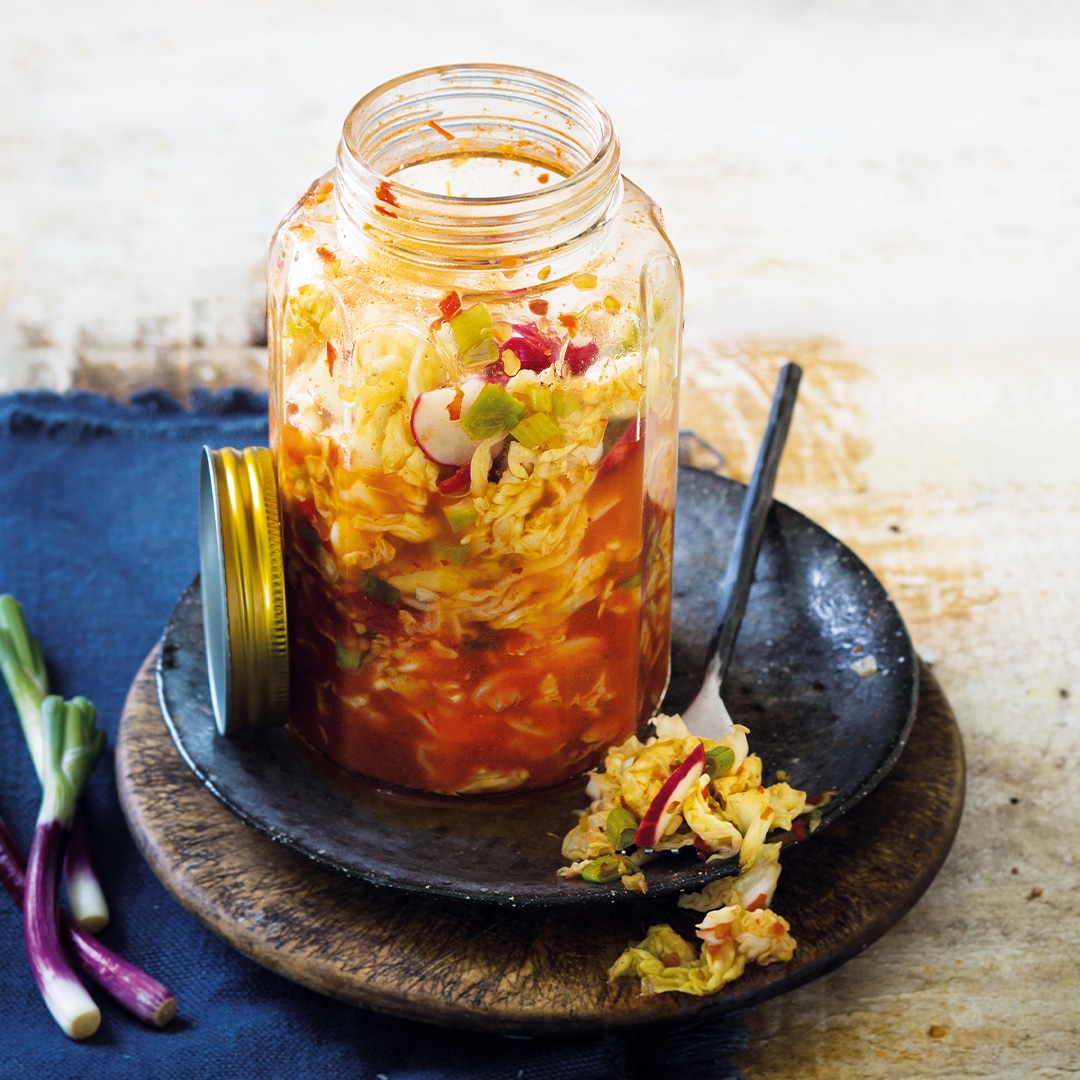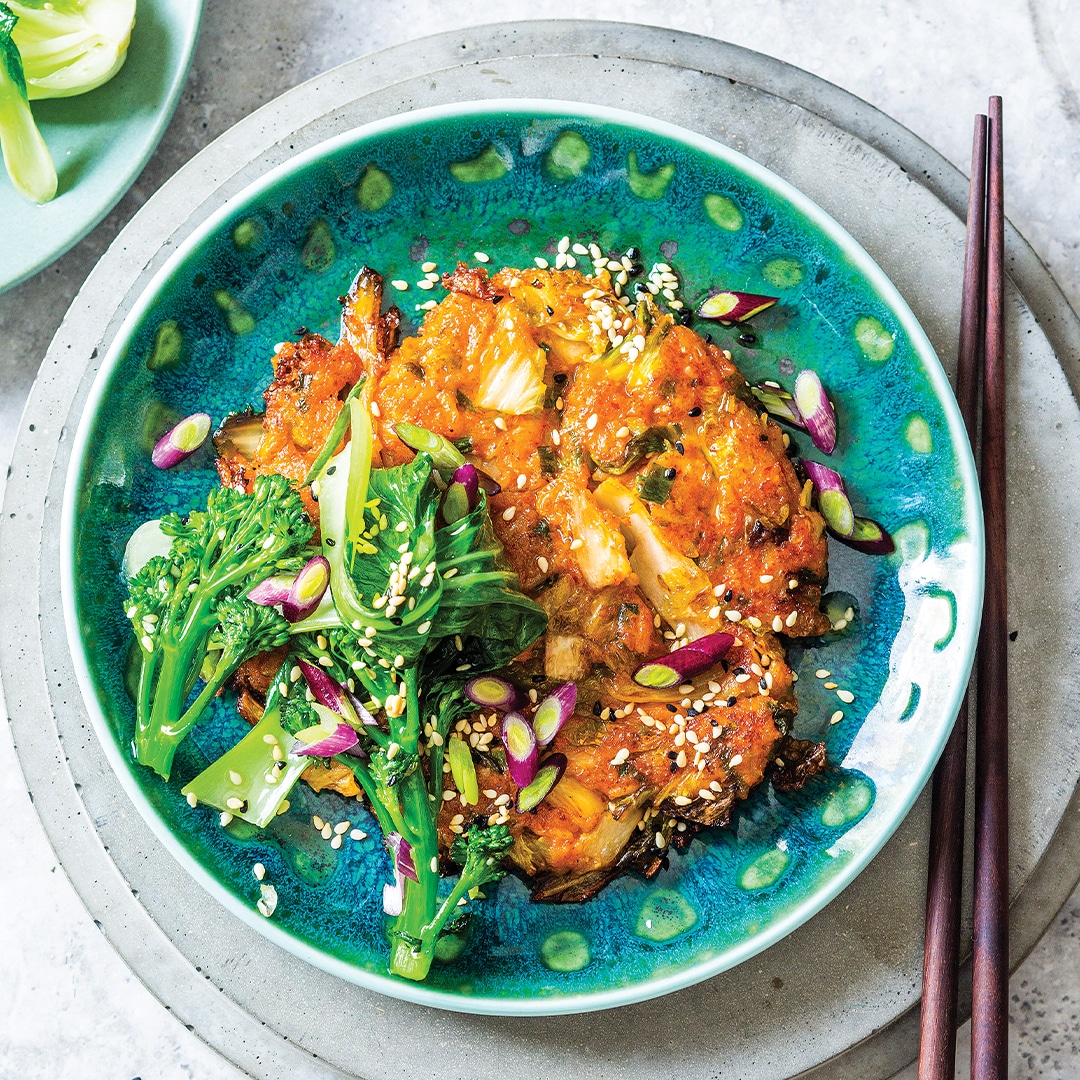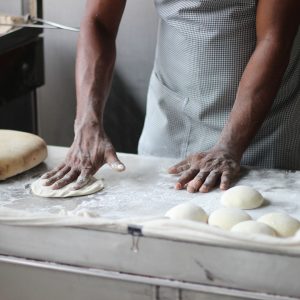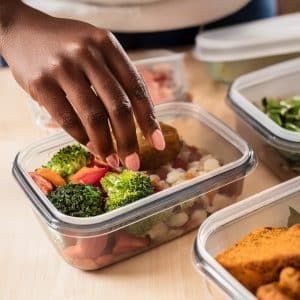Kimchi is all the rage! We break down the science behind the good-for-the-gut fermented food and all the ways it can enhance your meals as well as your health.
Kimchi is a Korean staple that has been around for millennia. This fermented pickle is often seen on most dinner tables as a side to any main dish, or simply accompanied by rice. Today kimchi takes over 200 forms but regardless of the main ingredient or spice that differentiates one from the next, it symbolises more than just food. Kimchi represents the essence of Korean culture and history.
This dish came to be out of the pure need for survival. The long, cold winters meant food would not last long, and farmers needed a way to ensure their produce would not go to waste. Over time, it was realised that by adding salt and bottling food, a process that encouraged the growth of beneficial bacteria, food could be preserved through fermentation for extended periods.
In the last 5-10 years, kimchi has become a buzz word in the western world. It’s been labelled as one of the world’s healthiest foods due to its incredible levels of fibre, essential vitamins, minerals and antioxidants that all contribute to the functioning of the body in endless ways.
Kimchi is made through the process of fermentation. Tiny bacteria living on fresh food break down the food’s sugars into acids through the absence of oxygen. With kimchi, for example, fresh cabbage is chopped up, added to a large bowl and covered with a salty brine. This salt assists the bacteria by drawing out all the water within the cabbage, releasing sugars. The bacteria already living on the cabbage then feed on these sugars, thus beginning the fermentation process.
After rinsing, flavour is added through pastes, sauces, spices and extra ingredients massaged into the cabbage. It is then packaged and sealed away from the workings of oxygen – this is done so that the bacteria is able to continue doing its job. After only a few days, the kimchi will be ready for sampling, but it can also be left to ferment for a few more months. The taste of kimchi tends to vary depending on ingredient, flavouring and length of fermentation but it is generally fresh, packing a punch of acidity and saltiness. It can be spicy, umami, garlicky, zesty -the options are endless!
Patience for progress
After 3 days: Tap the jar to see if any bubbles rise to the top – this is an indication that the fermentation process is doing its thing. Taste and smell for tanginess: Looking for more punch? Allow to ferment outside the fridge for an additional two to three days before returning to the fridge.
Once it’s stored in the fridge, do another taste test: The kimchi will continue to ferment in the fridge at a much slower rate. The level of spiciness will mellow down.
Ferment frenzy
Keep an eye out for these fermented gut-loving foods.
Sauerkraut – Made from cabbage, this is less complex and spicy than kimchi and is fermented significantly longer.
Kefir – A fermented drink made using milk and kefir grains. Kefir grains contain tons of micro bacteria and yeast which are fermented to make kefir.
Kombucha – A sweet cold drink made using tea and what is called a “scoby”. Scoby is another type of live culture made from bacteria and yeast. Combined with the sugar in the tea, over a few months it produces the distinctive carbonation kombucha is famous for.
Miso – A paste made from fermented soybeans used in Japanese cooking -perfect for creating that incredible umami flavour.
Sourdough – Made from flour, water, salt and a culture called “sourdough starter”, real sourdough bread gets its nutrition from the wild yeasts and lactic acid in the starter.
Pickles – Not all pickles are fermented (this is because many of them are only made with vinegar). Look for pickles jarred in a salt brine.
Yoghurt – This food is filled with healthy bacteria that balances out the body.
Kimchi & rice pancakes with garlicky greens
Serves 3-4

Serve with Kewpie mayonnaise (Japanese mayo) to cut through the spice.
Ingredients
For the pancakes
1 onion, grated
2 cloves garlic, finely chopped
1 1/2 cups homemade or store-bought kimchi
3 eggs
1 Tbsp soy sauce
4 spring onions, sliced
2 cups cooked brown basmati rice
3/4 cup cake flour
Salt and milled pepper
Oil, for frying
For the greens
1 Tbsp sesame oil
1 Tbsp canola oil
150g tenderstem broccoli
200g baby pak choi
200g fine green beans
2 cloves garlic, sliced
Handful sesame seeds, for serving
Sliced red salad onions, for serving
Method
- Fry onion until softened, about 6-8 minutes.
- Add garlic and fry for another minute. Set aside.
- Drain kimchi, reserving liquid, then chop into small chunks.
- Combine kimchi in a mixing bowl with 2 Tbsp preserving liquid and fried onion mixture.
- Add remaining pancake ingredients to create a batter. Season.
- Heat 1 Tbsp of oil in a pan over medium heat. Add a ladle of the batter and swirl the pan to spread it over the base.
- Fry pancake for about 3-5 minutes per side until crisp. Drain on kitchen paper and season. Set aside.
- Repeat with remaining batter.
- In a separate pan, heat sesame and canola oil.
- Flash-fry greens with garlic for 2-3 minutes until slightly wilted.
- Serve pancakes topped with greens, sesame seeds and salad onions.
Words: Sjaan van der Ploeg
Recipes & photography: Fresh Living Magazine




